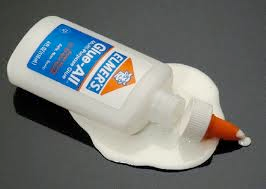Caroline Horton
Human Development and Family Studies and Early Childhood Education
Beginning Reading
Piper's Icky Sticky Drippy Glue
Caroline Horton
Rationale: This lesson will help children learn about the short vowel correspondence i= /i/. In order to be a beginner reader, students will learn to recognize the vowel and know their sound. In this lesson, children will learn to recognize, spell, and read words containing i= i/i. They will be learning a meaningful representation (trying to get glue off your hands), they will spell and read words containing this spelling in a letterbox lesson, and read a decodable book that focuses on the correspondence i= /i/.
Materials:
-
Graphic image for trying to get glue off of hands
-
Cover up critter to help students read words they are struggling with
-
Whiteboard or smartboard to demonstrate letterbox lesson and for students to practice
-
Letter tiles for each student and teacher with the letters: b, i, t, h, p, g, l, n, k, o, o
-
List of spelling words on a poster: it, hip, fix, big, blink, igloo, pig
-
Decodable text: Tin Man Fix it (Educational Insights 1990)
-
Assessment worksheet
Procedure:
-
Say: “To become expert readers, we need to learn the code that tells us how to pronounce words. Today we are going to learn the vowel i= i/i. Think of the sound /i/ like a person with icky, sticky, drippy hands. (Show them the image). Let’s act like we have glue stuck to our hands like the person in the picture. When there is glue on our hands they are icky and sticky. Sometimes we tend to make messes when we get into glue with our crafts. Think of rubbing hands together like glue is on them and they are stuck together. When we see the letter I today, we will know to say /i/ like icky sticky drippy glue on Piper’s hands.”
-
Say: “Before we learn how to use the /i/ in words, we need to listen to some works with the /i/ sound. When we listen for /i/ in words, we hear the “i, i, icky” sound and my mouth gets a little bit wider. (vocal gesture for /i/) I will show you first in the word fix. I heard that i, i, icky i sound and I felt my mouth get a little wider (point to the corners of your mouth drawling out). Now I am going to see if it’s in bat. Hmmm, I didn’t hear the “i, i, icky” sound and my mouth didn’t get wider like it did with the short i. Now, you try. If you hear /i/, show me you heard it by doing out icky sticky hand motion. I want you to put your fingers on the corners of your mouth, too, so you can feel your mouth stretch when it makes the /i/ sound. Let’s see what other words it is in. Let’s try this with the words cat, it, hip, mad, fix, big, hello, blink, igloo, people, pig.”
-
Say: “Now let’s look at a tongue tickler for our /i/ sound. The baseball mit fit Pippa who is six and just got hit in the hip. What if we wanted to spell some of these words on the board? We need to get out our letter box lesson tiles and our mini white boards to place the proper letters in the boxes to sound out the words. Let’s do the word six since a lot of you in the class are six years old. First, we need to figure out how many phonemes are in the word six. So, we need to stretch out the word, s/ i/ x. I hear 3 phonemes so I need 3 boxes. The first sound I hear is /s/, the next letter is the /i/ sound and the third is the /x/. What letters go in which box? I will put the s in the first, the i in the second, and the x in the last. Let’s repeat this word, “six”. Let’s continue to do this together as a class and I will let some of you do words individually at the end. Let’s look at the words: it, hip, fix, big, blink, igloo, pig and put our chunks together to sound out the words with our /i/ sound.”
-
Say: “After our practice with the letter box lessons I am going to walk around the room and make sure each student has mastered the process. After I check over all the word you have practiced, each student is going to read one of their words and I am going to give you one more word to write it down on your white board without my help as a mini practice quiz.”
-
After our letter box practice, we will read the decodable book, “Tin Man Fix It”. The Tin man is a man named Tim. Tim is planting flowers with Jim and someone on their skateboard ends up running into Tim! He is in a million pieces and needs help getting back together. Will Jim be able to fix Tim? Read the rest to find out! (Children can read this book in pairs)
-
After reading, students will finish our lesson /i/ with the worksheet. This will evaluate individual progress for each student. The worksheet shows pictures of items of something with an /i/ sound. The student will match the word from the word bank with the picture of the action. (Worksheet attached in sources)
-
If extra time? Phonic cue reading, extra letterbox words, read the second decodable book, Liz Is Six.
Sources
Geri Murray: https://sites.google.com/site/readingwritingconnection/beggingreadingdesign
Sara Purvis: https://ssp0015.wixsite.com/website/beginning-reader
Taylor Bullard: http://www.auburn.edu/academic/education/reading_genie/awakenings/bullardbr.htm
Kendall Peel https://kmp0054.wixsite.com/lessondesigns/beginning-reader-design
Worksheet: https://www.funfonix.com/worksheets/book1_page19.php
Book: Tin Man Fix It. Educational Insights. 1990.
